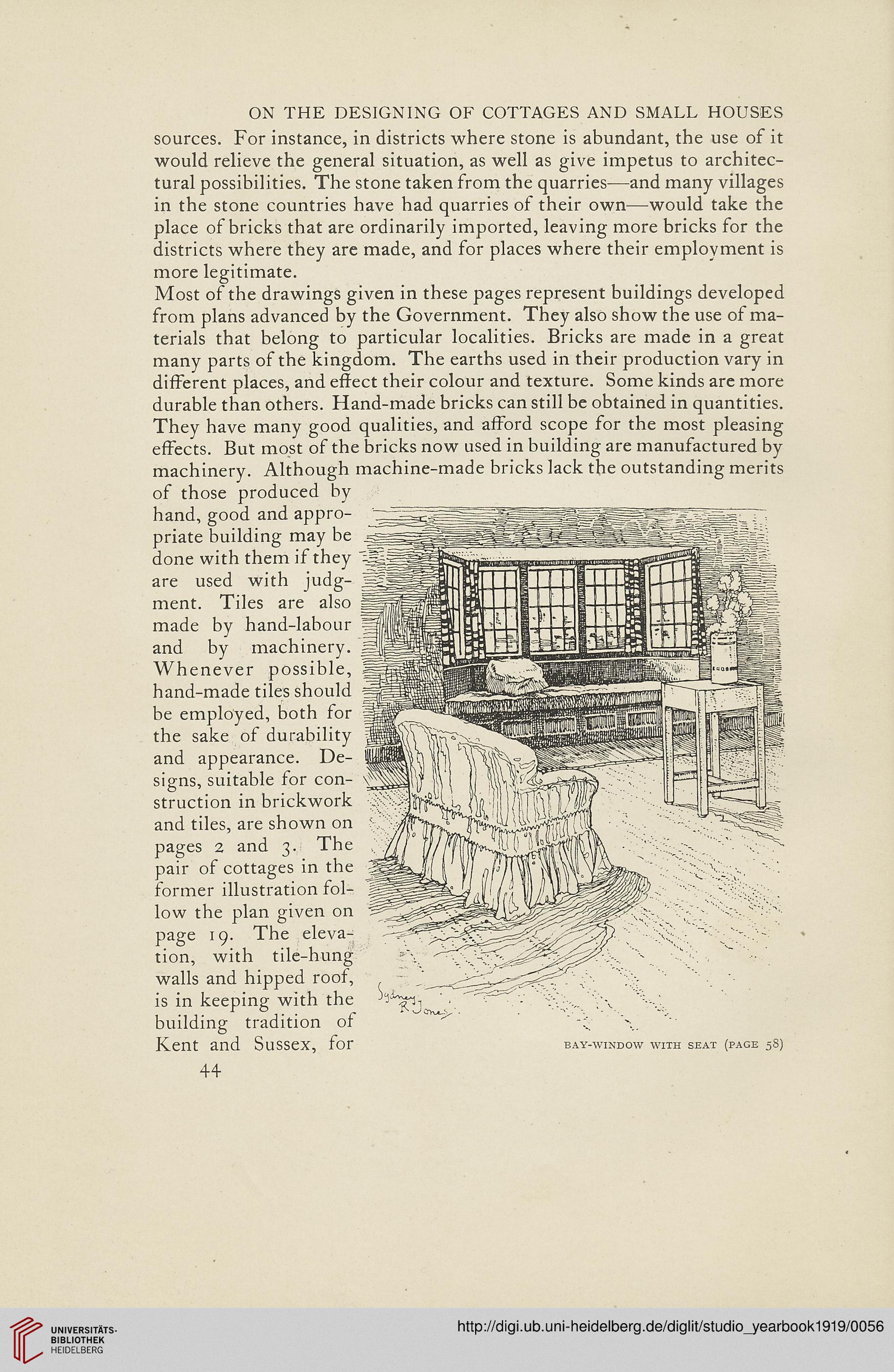ON THE DESIGNING OF COTTAGES AND SMALL HOUSES
sources. For instance, in districts where stone is abundant, the use of it
would relieve the general situation, as well as give impetus to architec-
tural possibilities. The stone taken from the quarries—and many villages
in the stone countries have had quarries of their own—-would take the
place of bricks that are ordinarily imported, leaving more bricks for the
districts where they are made, and for places where their employment is
more legitimate.
Most of the drawings given in these pages represent buildings developed
from plans advanced by the Government. They also show the use of ma-
terials that belong to particular localities. Bricks are made in a great
many parts of the kingdom. The earths used in their production vary in
different places, and effect their colour and texture. Some kinds are more
durable than others. Hand-made bricks can still be obtained in quantities.
They have many good qualities, and afford scope for the most pleasing
effects. But most of the bricks now used in building are manufactured by
machinery. Although machine-made bricks lack the outstanding merits
of those produced by
hand, good and appro-
priate building may be
done with them if they
are used with judg-
ment. Tiles are also
made by hand-labour
and by machinery.
Whenever possible,
hand-made tiles should
be employed, both for
the sake of durability
and appearance. De-
signs, suitable for con-
struction in brickwork
and tiles, are shown on
pages 2 and 3. The
pair of cottages in the
former illustration fol-
low the plan given on
page 19. The eleva-
tion, with tile-hung
walls and hipped roof,
is in keeping with the
building tradition of
Kent and Sussex, for bay-window with seat (page 58)
44
sources. For instance, in districts where stone is abundant, the use of it
would relieve the general situation, as well as give impetus to architec-
tural possibilities. The stone taken from the quarries—and many villages
in the stone countries have had quarries of their own—-would take the
place of bricks that are ordinarily imported, leaving more bricks for the
districts where they are made, and for places where their employment is
more legitimate.
Most of the drawings given in these pages represent buildings developed
from plans advanced by the Government. They also show the use of ma-
terials that belong to particular localities. Bricks are made in a great
many parts of the kingdom. The earths used in their production vary in
different places, and effect their colour and texture. Some kinds are more
durable than others. Hand-made bricks can still be obtained in quantities.
They have many good qualities, and afford scope for the most pleasing
effects. But most of the bricks now used in building are manufactured by
machinery. Although machine-made bricks lack the outstanding merits
of those produced by
hand, good and appro-
priate building may be
done with them if they
are used with judg-
ment. Tiles are also
made by hand-labour
and by machinery.
Whenever possible,
hand-made tiles should
be employed, both for
the sake of durability
and appearance. De-
signs, suitable for con-
struction in brickwork
and tiles, are shown on
pages 2 and 3. The
pair of cottages in the
former illustration fol-
low the plan given on
page 19. The eleva-
tion, with tile-hung
walls and hipped roof,
is in keeping with the
building tradition of
Kent and Sussex, for bay-window with seat (page 58)
44




